
The market has been changing violently over the past few years—perhaps for the better, perhaps not. As someone who came to love science fiction through the magazines little over a decade ago, it pains me to see those magazines either discontinued or struggling to adapt with the times. There are, of course, one or two exceptions. For those who see fresh potential in original anthologies, though, it's hard to argue with the results—even if, say, Damon Knight's Orbit series has offered mixed results.
The latest one-off anthology, Three for Tomorrow (the editor is uncredited, but I've heard rumors that Robert Silverberg is the mastermind behind this volume), features three new novellas from Robert Silverberg, Roger Zelazny, and James Blish, plus a foreword from Arthur C. Clarke explaining the anthology's intriguing premise.
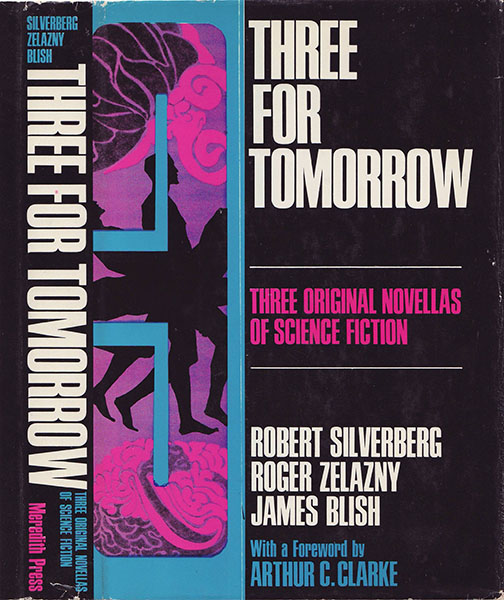 Cover art by Barry Martin.
Cover art by Barry Martin.
Foreword, by Arthur C. Clarke
In just a couple pages, the venerated Arthur C. Clarke sums up what the ‘60s will probably be remembered for: a historical text written in blood. Clarke cites, among other things, the Charles Whitman shooting back in ‘63, that massive blackout in the northeast back in ‘65, and of course, Lee Harvey Oswald.
Clarke then asks a rather curious question: “When will some Lee Harvey Oswald attempt to assassinate a city—or a world?” Thus the following stories will presumably share a theme of sorts, although as we’re told in the editor’s introduction, Silverberg, Zelazny, and Blish wrote totally independently of each other.
No rating for the foreword.
How It Was When the Past Went Away, by Robert Silverberg
The first novella is also the longest, at a solid eighty pages. More of a tapestry than a focused narrative, we follow a number of characters in San Francisco after a disgruntled man taints the city’s water supply with an experimental drug—said drug causing selective amnesia. The year is 2003, where robots handle much of the manual labor and people get their news through the “data-net,” the problem now being that not everyone remembers it’s 2003. We follow, among others, a famous sculptor who has sunk into a hilarious amount of debt with several corporations, a magician or “mnemonist” who has an existential crisis after part of his memory has been wiped, a doctor who has been guilt-ridden for the past decade because of a family tragedy he holds himself responsible for, a decorated war veteran who only drinks bottled water out of paranoia (I suspect this is a deliberate reference to Dr. Strangelove’s General Ripper), and I could go on a bit more. None of these characters could be considered “the hero,” but while the story is short on anyone individually sympathetic, we do get a rather colorful ensemble cast as compensation.
Silveberg has been writing at a furious pace for the past few years, apparently having come to maturity since he started writing fiction again back in—was it ‘63? I was impressed with The Man in the Maze when it ran in If last year, and “How It Was When the Past Went Away” further hints at a growing maturity, although it has a few issues that weigh on it.
The most immediate problem is that it is overstuffed for a novella, with more characters than the reader could reasonably keep track of, most of them one-note. The women (the wives and secretaries, as nobody else of the female persuasion seems to exist here) get it the worst. Silverberg is able to conceive a believable future San Francisco in which technology has largely been computerized and creditors come in the form of robots with automated messaging, but for some reason he struggles to conceive female characters who do not exist simply to be stared at. There is a curious subplot in which a husband and wife have forgotten getting divorced, because of the drug, and so work to reform their relationship; but again it feels undercooked, because the wife is written less like a person and more like something to be gained. Overall this story would not win awards for character psychology.
I’m prefacing my complaints just to get them out of the way, because what Silverberg does right is certainly commendable. Between this and some other recent stories (especially the novels), Silverberg has been hunting intellectual big game. The San Francisco of 2003 is vividly and believably realized, sort of coming off as like a Stand on Zanzibar in miniature, but the thematic implications of the drug at the story’s center are ultimately what give it a certain heft and a sense of foreboding. Silverberg seems to posit that if we really value our own happiness that we would choose to forget our past trauma, or at least some of it; yet the fact that characters struggle to come to terms with forgetting part of their pasts implies that we do value something more about ourselves than our happiness. If only we could articulate what that is. Alienation has been a recurring theme for Silverberg since at least “To See the Invisible Man,” but here he tethers it to our sense of memory and how our memories can connect us with other people. The shared amnesia for the people in this story becomes its own moment of collective memory for them, which I have to admit is a lovely idea. If we were able to forget then we would be happier, but then would we also become slightly less human? And would the inverse be true, that by remembering we become more human?
A high three stars, but I feel Silverberg could have very feasibly tweaked it to bring it up to four. I also would not be surprised if we see a novel expansion in the future.
The Eve of RUMOKO, by Roger Zelazny
He’s only been around half a dozen years or so at this point, but Zelazny has quickly become one of my favorite writers to have coincided with the New Wavers. I do fear, however, that despite still being quite young he has already taken to repeating himself. To make a long story short, “The Eve of RUMOKO” (so named “after the Maori god of volcanoes and earthquakes”) is about Project RUMOKO, in which nuclear explosives are used deep underwater to raise up volcanic islands. In “How It Was When the Past Went Away” society’s stability is threatened by a tainted water supply, but with Zelazny’s story the underlying problem is overpopulation. Project RUMOKO may provide additional land for human habitation, but the ecological consequences of these new islands could be severe—never mind the effect on societies that already live in undersea domes. Our narrator/protagonist, “Albert Scwheitzer” (he makes it clear that this is not his real name, which we never learn), has been brought on ostensibly as an engineer, but his real job is as a private detective—in the case of Project RUMOKO, to find the culprit behind what seem to be attempts at sabotage.
To give credit where credit’s due, we don’t often see SF and detective fiction cross-pollinating, for reasons that have mostly to do with the fact that you have to provide both suspense and plausibility when writing a mystery in an SF setting. Or to put it another way, how would you provide a plausible mystery in a setting where presumably developments in technology would make it harder to get away with a crime? Zelazny sidesteps this by having the setting be mostly grounded, as in not too different from what we now recognize, other than that humanity has become overcrowded enough that even the aforementioned undersea domes have proven to not be enough. Given how islands are naturally formed, it isn’t too far a stretch to imagine man-made islands as a possible solution to overpopulation. Whatever other problems this story has, at least it remains internally consistent. Zelazny, when he tries, has an imagination that can be disarming.
Unfortunately, while the bones of the story are arguably new territory, the meat and organs are not. “The Eve of RUMOKO” is a Frankenstein monster comprised of at least three previous Zelazny stories, namely “The Doors of His Face, the Lamps of His Mouth,” “This Moment of the Storm,” and “The Keys to December,” each of these a very good story in its own right. The problem is that when you throw these three stories into a stew to form a fourth, the result reads like Zelazny is coasting for the most part. It doesn’t help that “Schweitzer” might be the moodiest and most insufferable protagonist in what is becoming a rather long line of moody and insufferable Zelazny protagonists, all men, all interchangeable: He smokes like a chimney, is cool with the ladies, and is even able to outsmart a couple of goons in a drawn-out interrogation sequence. I’m also becoming tired of Zelazny’s penchant for using mythological symbolism as a crutch, especially (such as here) when he cribs from non-European cultures for his material. Overall I found the experience concerning—not in a vacuum but rather in conjunction with Zelazny’s previous work.
Taken simply on its own it’s a perfectly fine story, perhaps three stars; but with Zelazny I expected a lot more.
We All Die Naked, by James Blish
Blish’s story is the shortest and darkest of the bunch, both in its premise and implications. It’s also the best. This is the only story of the three which follows through on Clarke’s foreword, in the sense that technology has actually contributed to apocalyptic conditions. Blish speculates here that if humanity is doomed, it’s because of the sheer amount of waste we produce, and how much of that waste can’t be destroyed. We’re told that by the end of the 1980s sea levels will have risen enough to submerge the world’s coasts, including Manhattan, which aside from the crunched timetable (I seriously doubt people will be traveling via canoe in the city in thirty years’ time) sounds plausible enough. The problem is twofold: how much waste we produce and how we might (or might not) be able to dispose of said waste. For example, nuclear power is perhaps more efficient when it comes to producing waste than burning coal, but nuclear waste is hazardous long-term, and there isn’t a foolproof way to dispose of it. Thus, Blish posits, we (or at least Earth) will be doomed in the end.
The protagonist is a union leader who has been called on to pick three men and six women to board a shuttle for the moon—no children allowed. The idea is that while Earth may be doomed, tiny colonies of humanity can be saved. People are chosen based on fertility and each group leader’s personal preference, children and presumably the elderly being left behind. The situation is bleak. I do have a few quibbles first, none of which I could consider a major issue at least by itself. Aside from the crunched timetable there are some odd asides made via the third-person narrator, such as a certain bureaucrat being singled out as “an obvious homosexual,” along with the few female characters at times being described in unflattering terms. Characters are also fluent in what we would call Expositionese, and a fair portion of the wordage is spent on monologues detailing how the world got to this sorry state. I also have to warn the reader that this story stops abruptly, quite literally in the middle of a sentence such that I was unsure at first if this was deliberate or a misprint; but I’ve since come to think the abrupt (and hopeless) ending is quite deliberate.
Something SF and horror have in common is the capacity to ask disturbing questions, in that these questions dislodge the reader’s complacency. Blish asks a simple but brutal one: “Would mankind be able to survive without our possessions, and even our waste?” Would we be able to bury Shakespeare, or even personal items which possess only sentimental value, for the sake of the race’s survival? Blish supposes we wouldn’t. While there is a tangible irony to the plot, along with stylistic flourishes (there’s a cat named Splat!, with the exclamation point as part of the name) that suggest Blish is trying to fit in with the New Wave crowd, the impending doom of “We All Die Naked” evokes the God of Abraham rather than a comedy act. This is Blish at his most merciless, even if his shortcomings as a writer (his inelegant dialogue, his uncharitable attitude towards his female characters) work to form cracks in the armor.
It’s imperfect, but it still has a haunting power. Four stars.
Istanbul (Not Constantinople)
Up the Line, by Robert Silverberg
[We received this review of the novel version of "Up the Line" at almost the same time as we received John Boston's commentary on the serialized version. We considered both articles to be worth reading, even if "Up the Line" might not be… -ED]
But we're not done with Silverberg! He's said recently that he refuses to write anything purely for money now, which implies artistic integrity, but that hasn't slowed down his output much. His latest novel, Up the Line, started its serial run in Amazing Stories a couple months ago, but you can now read the full novel, uncensored (it's a very dirty novel) and in paperback. Unfortunately this might be the worst novel Silveberg has written since he returned to writing half a dozen years ago. It's such a misshapen creature of a book that I honestly have to wonder what Silverberg meant by it.

Ever since the invention of time travel, one's notion of objective time has broken down, with only "now-time" being taken into account—in this case now-time is 2059. Judson Elliott III is a new recruit as a Time Courier, whose job basically involves being a guide and babysitter for a bunch of rich tourists. Time travel has been commercialized such that notable events in history are industries unto themselves, especially the deaths of famous people. The crucifixion of Jesus Christ and the assassination of Huey Long are just two examples, in which the crowds gathering around the slain historical figures are at least partly comprised of time travelers.
Silverberg goes to great lengths to rationalize how such a business would work, so much in fact that for about the first seventy pages of this 250-page novel the plot is all but nonexistent. This isn't necessarily a negative, or at least it didn't have to be. We grow accustomed to Jud's new profession, the rules he is expected to follow, and the few friends he makes among the fellow Couriers, including Sam, a white man's idea of a black man, and Capistrano, a melancholy fellow who fantasizes about committing suicide in a rather odd fashion—by going back in time and murdering one of his own ancestors, thereby preventing his own birth.
Up the Line works on the presumption that you, the reader, are already thoroughly familiar with the time travel genre. The Time Patrol, a police faction whose job specifically calls for making sure the Couriers and their clients don't destroy mankind through some paradox, could be a hat tip to Poul Anderson's own Time Patrol, or even the late H. Beam Piper's Paratime Police. And why not? Any time travel story written in the past five years or so would have to draw comparisons with, among other things, Robert Heinlein's masterful "'—All You Zombies—'," which similarly concerns sex and how it might act as a catalyst for time paradoxes. However, while the sex in Heinlein's little jewel of a story is kept offscreen, there are quite a few scenes in Silverberg's novel that could be considered pornographic. Something Jud quickly learns about the Time Service is that the Couriers are almost too busy chasing tail to look after their clients, and the women they chase after are (somehow) always willing. The biggest hedonist of them all has to be Themistoklis Metaxas, a senior Courier who, quite opposite from Capistrano, goes out of his way to bed the female members of his own ancestry. Incest ends up playing such a prominent role in the novel that it's basically responsible for the plot even starting in earnest, as Metaxas's roguish behavior inspires Jud to think about the incest taboo with regards to his own ancestry.
The problem with Up the Line is that it's quite a bad novel, to my mind, and yet it's easy to see how other readers might think it's another victory for Silverberg. Who doesn't love a good time paradox? Not to mention the rampant sex, which will draw in younger readers and those who are predisposed to think about sex regularly (and I admittedly fall into both of those groups), while at the same time reminding us that the New Wave is here to stay. The locations are exotic, especially the fulcrum of the action, that being Byzantium/Constantinople/Istanbul across the centuries, the city which Metaxas frequents so often as to have residency there. There are constipated passages in which the action ceases so that Jud (read: Silverberg) can educate us on, for example, what rural life was like in 12th century Byzantium. The amateur historian's passion for his subject can be infectious, which I think was what Silverberg was counting on, so that he might distract us from how uneventful this book really is. If I were to keep only the necessary background information and Jud's quest to trace his family lineage backwards, I would have cut the novel in half, to have it squeezed nicely into one half of an Ace Double. Remove most of the sex scenes and historical tangents, and you would have maybe a long novella. It doesn't help that by lingering so long on the mechanics of his time travel business, Silverberg invites us to poke holes in it. Indeed, why are the Time Service and Time Patrol separate organizations? Why is it so easy to abuse such a fragile system? How have we not been devolved to the state of primordial ooze thanks to some tourist stepping on a butterfly?
So there isn't enough action to sustain this 250-page novel. So what? The ideas are ambitious, and deliberately headache-inducing. What about the characters? Indeed, what about them. As I was reading Up the Line, I was intrigued but also at times disgusted—intrigued by the precarious relationship between the Couriers and the fabric of time they play with, and disgusted by the Couriers themselves. Jud starts out as sex-starved and only becomes more preoccupied with the notion of bedding a distant ancestor of his, namely the 17-year-old Pulcheria Dulca, in Byzantium. "It was lust at first sight," as Jud tells us; and of course Pulcheria, despite being married, is perfectly eager to go to bed with him. Truth be told, I've become concerned that Silverberg does not see women as fully autonomous beings, with their own interior lives and ambitions. The women in this book are granted even less personality than Sam, who himself is a caricature, with even Pulcheria barely qualifying as a character. There are also some comments Jud makes about a few female characters younger than Pulcheria (including a disturbing episode in which he encounters his own mother as a five-year-old) that I found revolting. I do mean this with the intention of giving some offense when I say Up the Line reads almost more like a Piers Anthony novel than Silverberg.
Pains me to say this, but I must give it two stars.


![[August 10, 1969] Pushing the Envelope (September 1969 <i>Amazing</i>)](https://galacticjourney.org/wp-content/uploads/2024/08/amz-0969-cover-672x372.png)

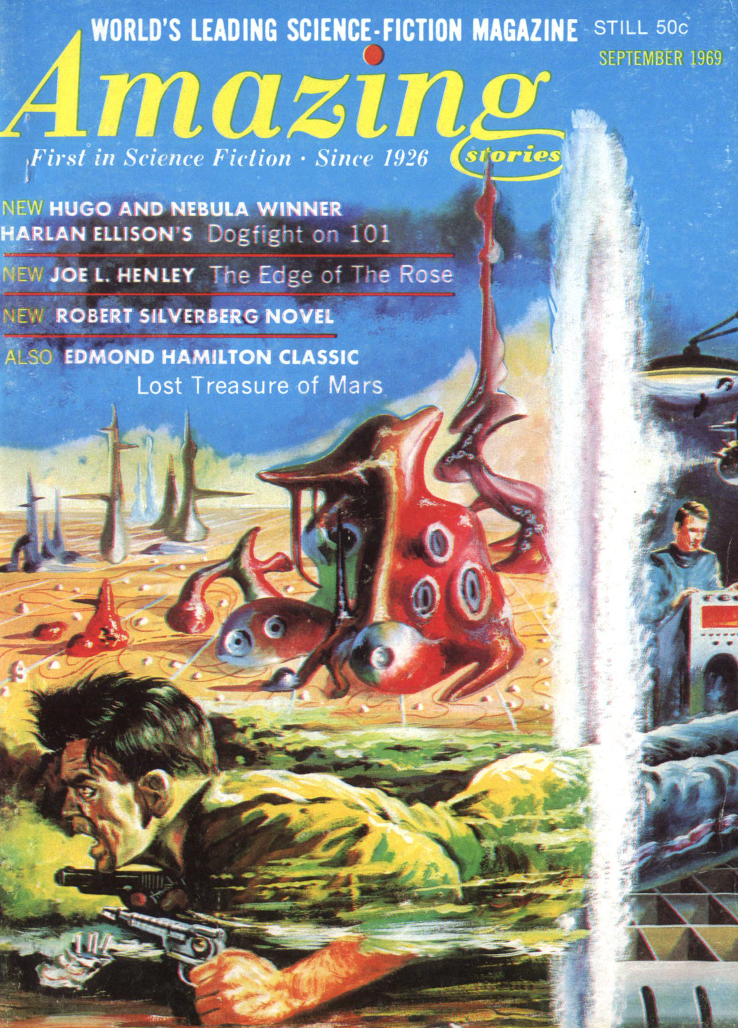

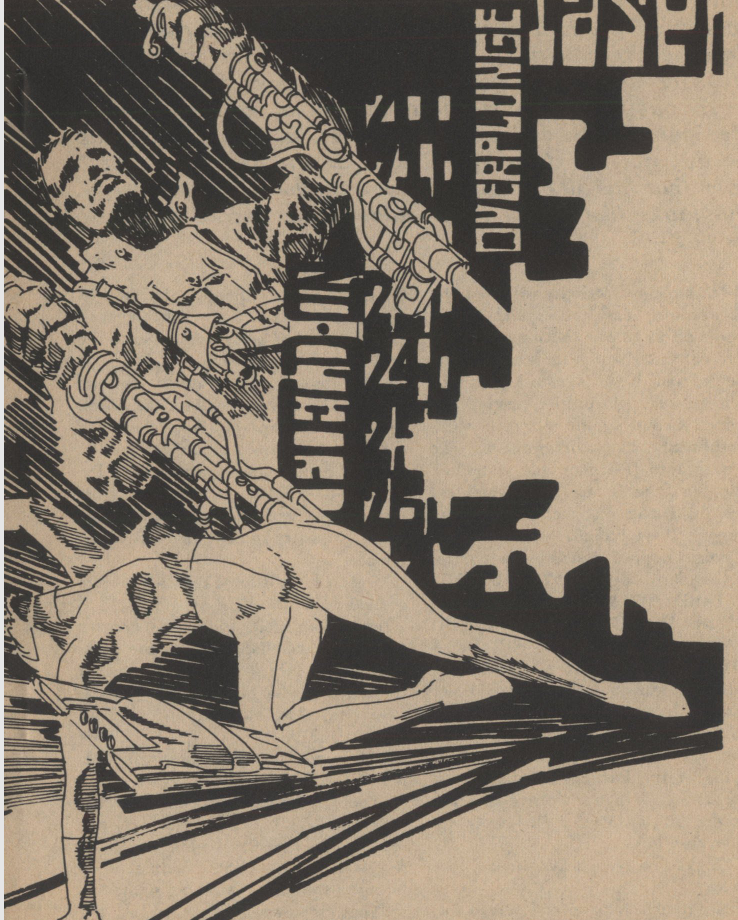
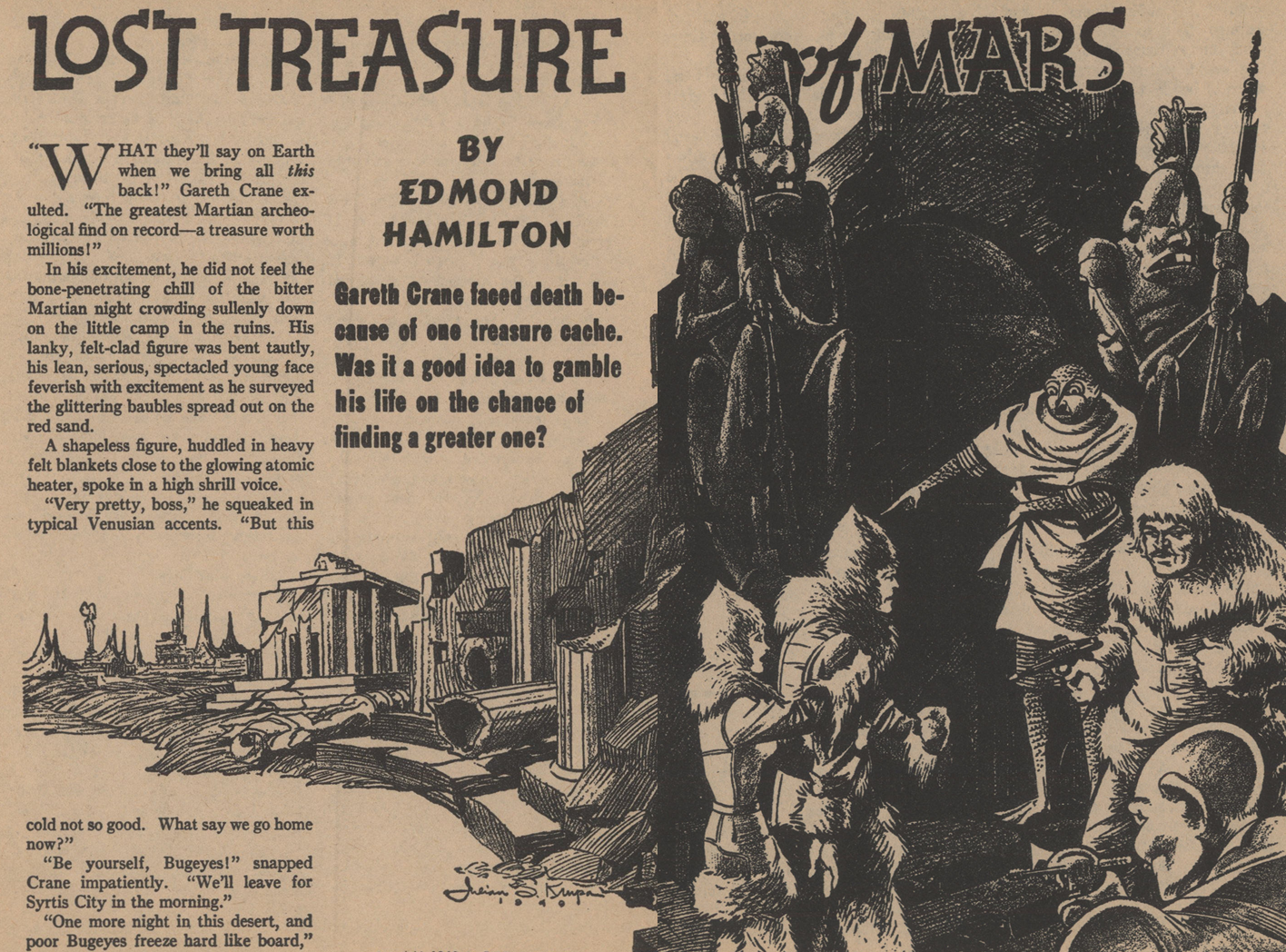
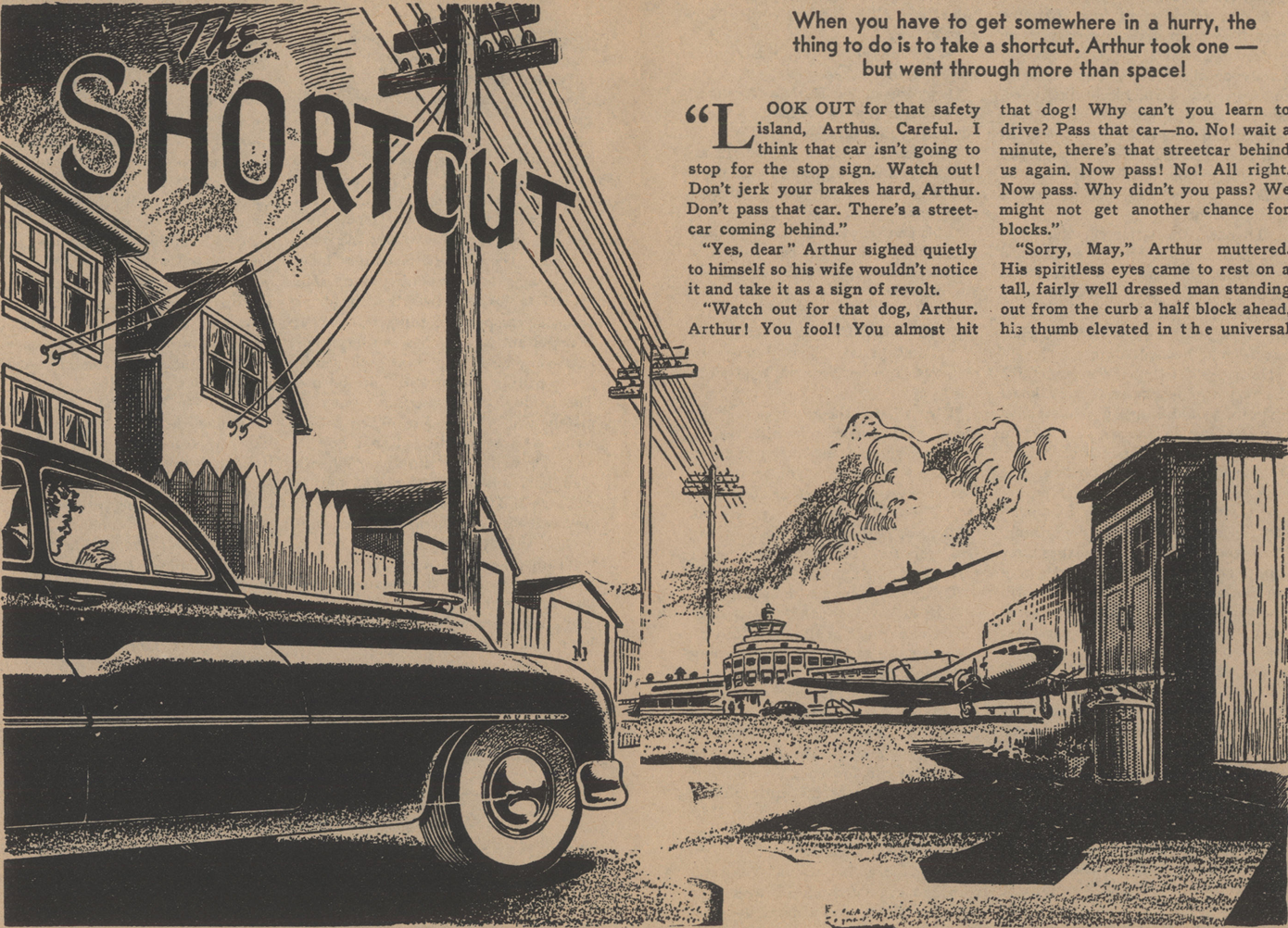
![[June 6, 1969] Blue Skies (July 1969 <i>Amazing</i>)](https://galacticjourney.org/wp-content/uploads/2024/06/amz-0768-civer-490x372.png)




